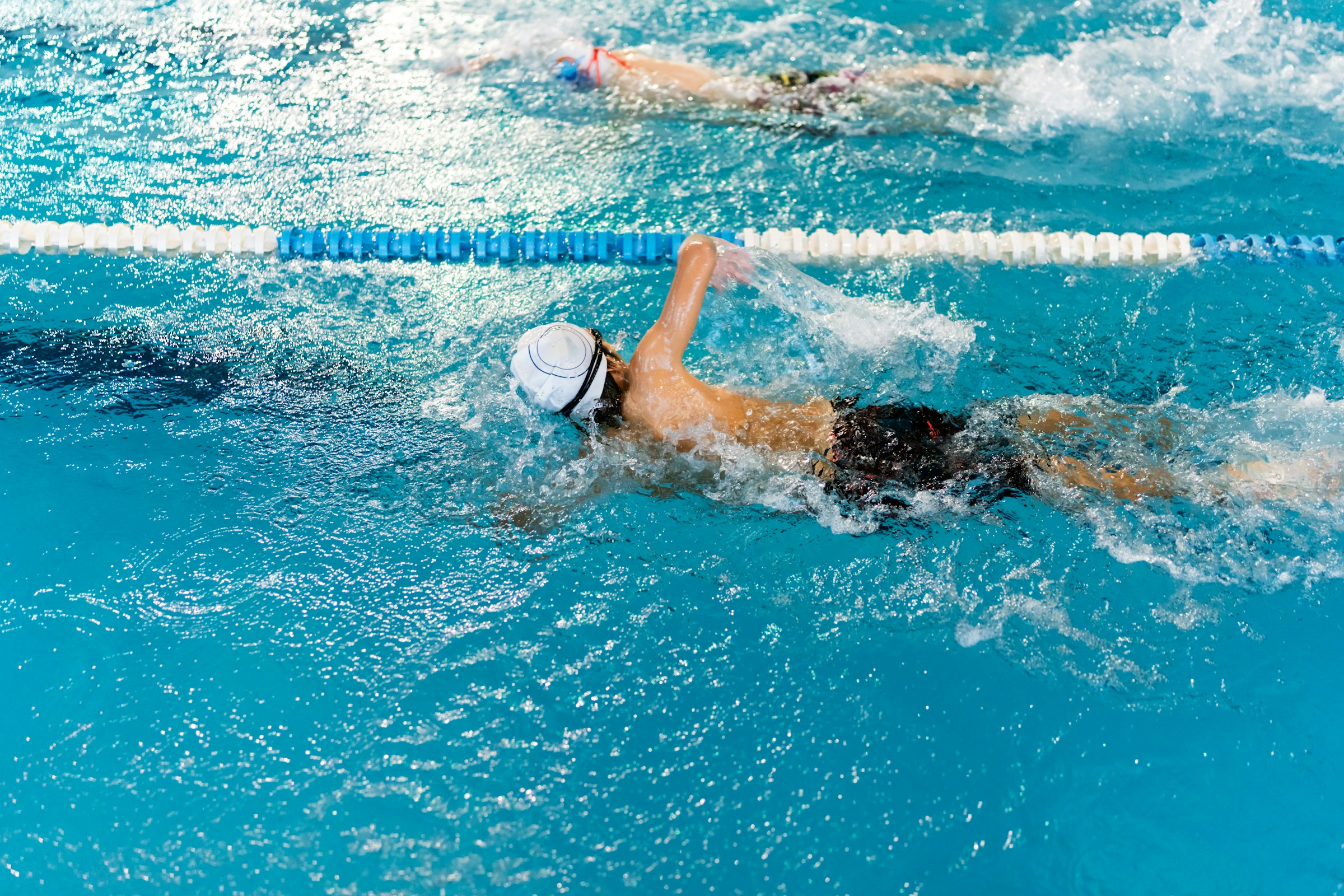The first time you feel your body float, the world quiets. Sound softens into a hush. Light breaks on the surface like glass. Your breath becomes the metronome. In that moment you are held by something bigger than you, and yet you are the one moving. This is where the case for swimming begins, not as a sport on a schedule, but as a way of living with water that will follow you for the rest of your life.
We call it a life skill because water is part of every geography and every day. It pours from taps, gathers in monsoon drains, frames coastlines, waits in hotel pools, and appears in weather alerts. Your relationship with it should not depend on luck or fear. It should rest on familiarity, respect, and the simple knowledge that you can keep yourself afloat.
Safety is the most practical reason, and it is also the most tender. A competent swimmer is not invincible. A competent swimmer is informed. You learn to read currents, to watch flags, to understand rip behavior, to know when a river after rain is not a playground. You learn the easy rule that saves lives when panic arrives. Roll onto your back. Breathe. Float. Signal. Help is easier to reach when you can make minutes feel longer with calm.
This calm is a design choice you build into your life. The pool becomes a training ground for nervous systems that are overstimulated by phones and deadlines. Breath control is not a trick. It is a habit that translates to meetings, to red-eye flights, to parenting moments when you want to react and choose to respond. You learn to take a slow inhale through the nose, to hold just enough for buoyancy, to exhale steady bubbles that keep you grounded. The water teaches you to pace yourself. That pacing shows up everywhere.
Swimming is also the most democratic of movement practices when you consider longevity. Joints appreciate the kind of support water gives. Shoulders and hips glide instead of grind. Recovery happens while you move. For people who stopped running because their knees complained, or who never loved the sound of impact on pavement, the pool offers a path back. Thirty minutes of slow laps can feel like a full reset without leaving you wrecked the next day.
There is a reason doctors recommend it through pregnancy, through injury, through later decades when balance begins to feel fragile. Buoyancy is not a luxury. It is a technology of care that human bodies have always had access to, as long as we learn to use it. Even if you do not chase speed, the practice of balancing the head, spine, and hips in a long line is an elegant posture lesson. You stand differently after you swim. You sit taller. You remember your ribs are not just a cage, but a bellows.
Water literacy is larger than stroke mechanics. It includes little rituals that belong to considerate communities. You learn to shower before you enter, to share lanes without theater, to circle swim with strangers and let that choreography be easy. You learn to rinse salt from your gear, to respect lifeguards, to keep glass away from decks and shorelines. These are social graces that build trust. A pool or a beach that feels cared for is safer because people know how to look out for one another.
Travel makes the case even stronger. Pools are in basements and rooftops and courtyards around the world. Lakes hold afternoons in the shade. Coasts pull families into tides and stories. Knowing you can swim turns a landscape into an invitation. It changes how you book a stay, how you plan a day, how you parent through holidays. The difference between standing at the edge and stepping in is the difference between watching and participating. It is the difference between telling a child to be careful and showing them how.
Climate is another quiet reason, especially in regions where rain arrives in sheets and water rises quickly. Flood awareness is not fearmongering. It is local knowledge. Float skills are not the whole solution, and yet they are one part of a safety culture that honors both education and infrastructure. When communities normalize swimming lessons for all ages, they normalize respect for water signage, for drainage systems, for evacuation routes. Preparedness feels less like panic and more like neighborly wisdom.
The gear is simple. A suit that does not distract you. A pair of goggles that seal without fuss. If you like early mornings, a cap to keep hair tidy and the head warm. That is it. No complicated wardrobe. No battery to charge. The minimalism is part of the charm. It lowers the barrier so the routine can endure when life gets busy. If you have access only to a small condo pool, your practice can still be real. If you just have the sea and a safe entry point with company, your practice can be real. The point is repeatability.
Repeatability is why swimming fits beautifully inside a sustainable life. The practice uses what is already there. It asks you to move with care, to rinse quickly, to leave spaces better than you found them. If you swim outdoors at daybreak, you borrow light instead of electricity for motivation. If you walk to the pool, the journey itself becomes part of the ritual. You begin to design around it. Towels dry on a line. Goggles live by the door. A small pouch holds your essentials so you can go from thought to action in minutes.
There is joy too, and it deserves its own paragraph. Joy is the body remembering play. Adults forget play because we rename it productivity and call it a plan. In water you can still plan, but the tactile pleasure sneaks in. The way a perfect turn feels when your feet plant and you send yourself down the lane. The way sunlight makes a living mosaic on the floor of the pool. The way a gentle swell lifts you and you ride it without trying to own it. This joy is not childish. It is human.
Parents and caregivers find another reason here. Teaching a child to swim is a gift they cannot misplace. You will not always be nearby. They will travel with friends. They will stand at rivers and beaches that you will never see. What you hand them is not supervision. It is agency. Start in the shallow end with breath and bubbles. Let them wear the whole face of pride when they learn to float by themselves. Keep lessons consistent. Celebrate patience more than tricks. The prize is comfort in water that lasts longer than medals.
Adults who never learned are not late. They are simply ready now. The first classes will feel vulnerable. That is normal. The pool has an honesty that is refreshing. No one pretends to float. You either do or you do not, and both are fine because both are practice. Find teachers who respect fear without feeding it. Ask for sessions that begin with back floating and safe entries. Progress is not linear. Some days your body forgets. On those days you reintroduce yourself to the water kindly.
For people with diverse bodies and abilities, swimming can be an unmatched space to reclaim movement. Water removes some of gravity’s demands. It gives room to experiment with range and rhythm. Many community pools now offer adaptive programs. They are worth seeking out and supporting. A world that teaches everyone to swim is not just safer. It is kinder. Inclusion looks like instruction that meets people where they are and celebrates every new skill as complete in itself.
Mental health threads through all of this like a current. The water invites you to be with a single task. Stroke. Breathe. Repeat. You cannot scroll underwater. You cannot answer every message. You are allowed to leave the world on the deck for half an hour. The return is cleaner focus and a nervous system that trusts you to pause. Over weeks that pause becomes durable. It travels with you into traffic and waiting rooms and tough conversations. You begin to recognize the edge between reaction and response. There is also a subtle education in boundaries. Water will tell you when you are tired. It will tell you when conditions change. You learn to listen. You learn to decide that today is for easy laps or for staying on shore. This listening builds a type of self-trust that is missing in many wellness routines that ask for more, louder, faster. Swimming asks for attention. It rewards consistency. It gives you the confidence to choose rest without naming it failure.
If you like frameworks, design your week around the simplest loop. Choose two or three days. Give yourself a short window, not a heroic one. Fifteen to twenty minutes counts. Use the same time slot if you can. Keep a small log in a notebook instead of an app. Write one line about how it felt. Over a month the pattern will reveal itself. Energy trends, sleep improvements, mood steadiness. You will notice which meals make your swims feel light and which times of day suit your pace. The practice becomes personal. At home, make small adjustments that keep the ritual friendly. A peg by the door for a mesh bag. A gentle cleanser so your skin does not complain. A robe for cool mornings so you are not negotiating with the air. If you swim in the sea, a designated spot for a compact first-aid kit and reef-safe sunscreen. These are not purchases for perfection. They are tiny supports that reduce friction. When friction is low, habits survive busy seasons.
Community strengthens the habit. A neighbor who meets you at the gate. A lap partner who enjoys the same quiet. A local coach who runs open-water sessions with attention to safety briefings and tide charts. Community turns a private skill into a shared culture of care. It keeps the pool clean. It keeps beaches respected. It keeps people learning. When someone new shows up, kindness is how we welcome them into the water. Environmental respect belongs in this conversation. The more we swim, the more we care about water quality. We notice when the pool chemistry is kind to eyes and when the sea line is free of plastic. We advocate for maintenance budgets and for public amenities that are safe and accessible. We learn about local marine life and practice the light touch of swimming around instead of through. The skill teaches stewardship because intimacy breeds responsibility.
For those who love metrics, you can keep them gentle. Track how many unbroken breaths you hold while floating calmly. Note how long it takes for your heartbeat to settle after an easy set. Pay attention to the length of your stroke rather than the clock alone. Numbers can help, but let them serve sensation. The aim is not winning against yourself. The aim is belonging in water. When we say swimming as a life skill, we mean it makes daily life better in dozens of small, repeatable ways. The confidence to cross a pool calmly during a hotel stay. The ability to manage energy during heat waves by choosing water instead of more air conditioning. The soft mood after a morning dip that makes the rest of the day more humane. The story you tell a child about the first time you both floated together, and the way their eyes held a mix of shock and pride.
You do not need to become a swimmer who counts medals or miles. You can become a person who knows water. A person who is at ease when the plan includes a pool. A person who can help a friend stay calm when a wave surprises them. A person who uses breath like a tool. That is enough. That is already a meaningful change in how you move through the world. If you are starting, start simple. Find a pool or a gentle shoreline with lifeguards and friends. Choose a time that feels kind. Focus on floating before anything else. Focus on exhale. Give yourself weeks. In a few months you will wonder how you lived with this much water everywhere and did not know it could hold you.
The truth is that water will be part of your life whether you learn or not. Learning lets you meet it on purpose. It turns caution into competence. It turns fear into respect. It turns a blue space into a place where your body remembers how to slow down. That is why swimming is a life skill. It is not just what you do in water. It is how water teaches you to live. What we repeat becomes how we live. Choose rituals that help you breathe. Choose skills that make the world feel larger. Choose water, and let it carry you when you need it to, and let it strengthen you when you are ready to move.














